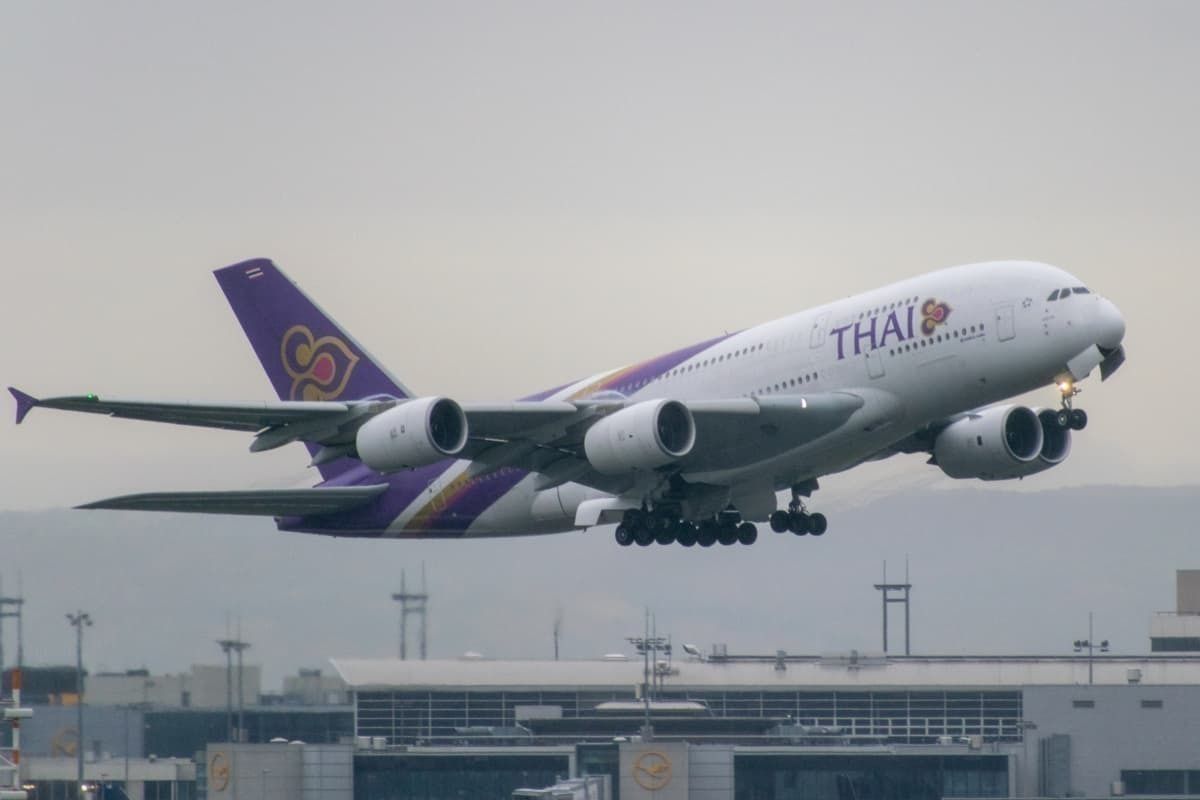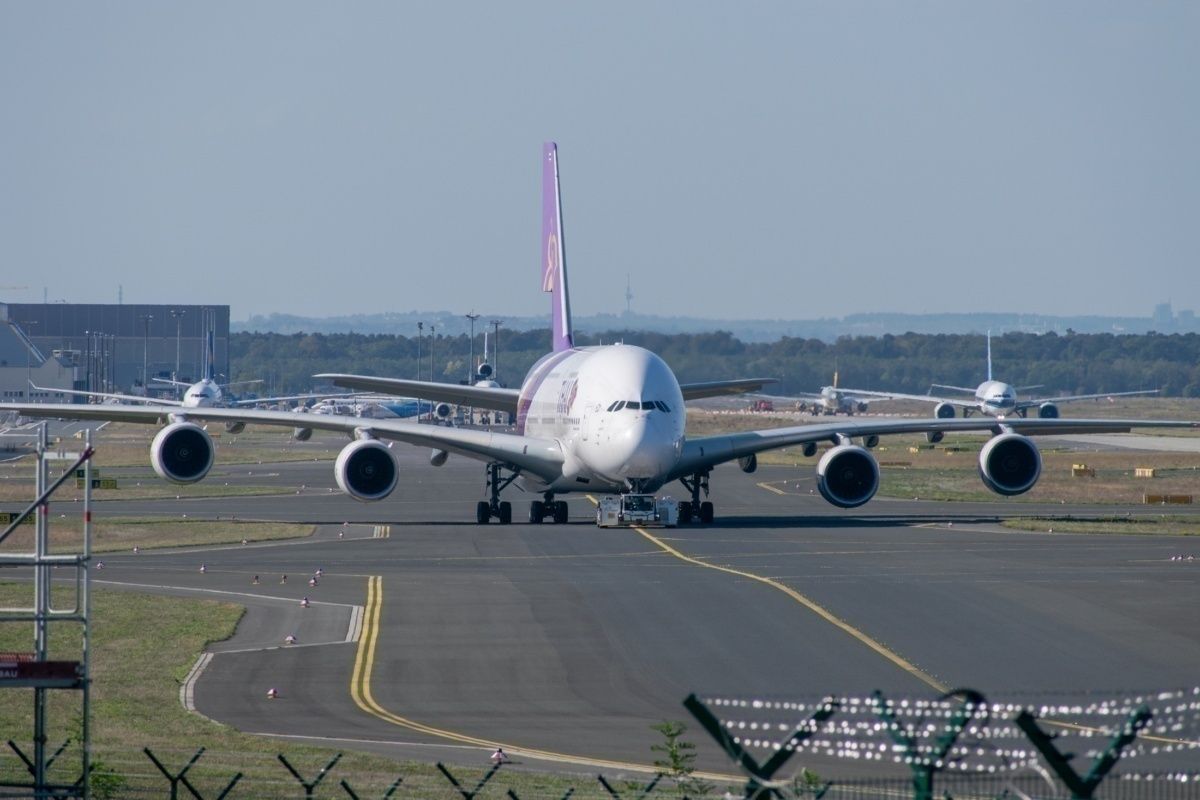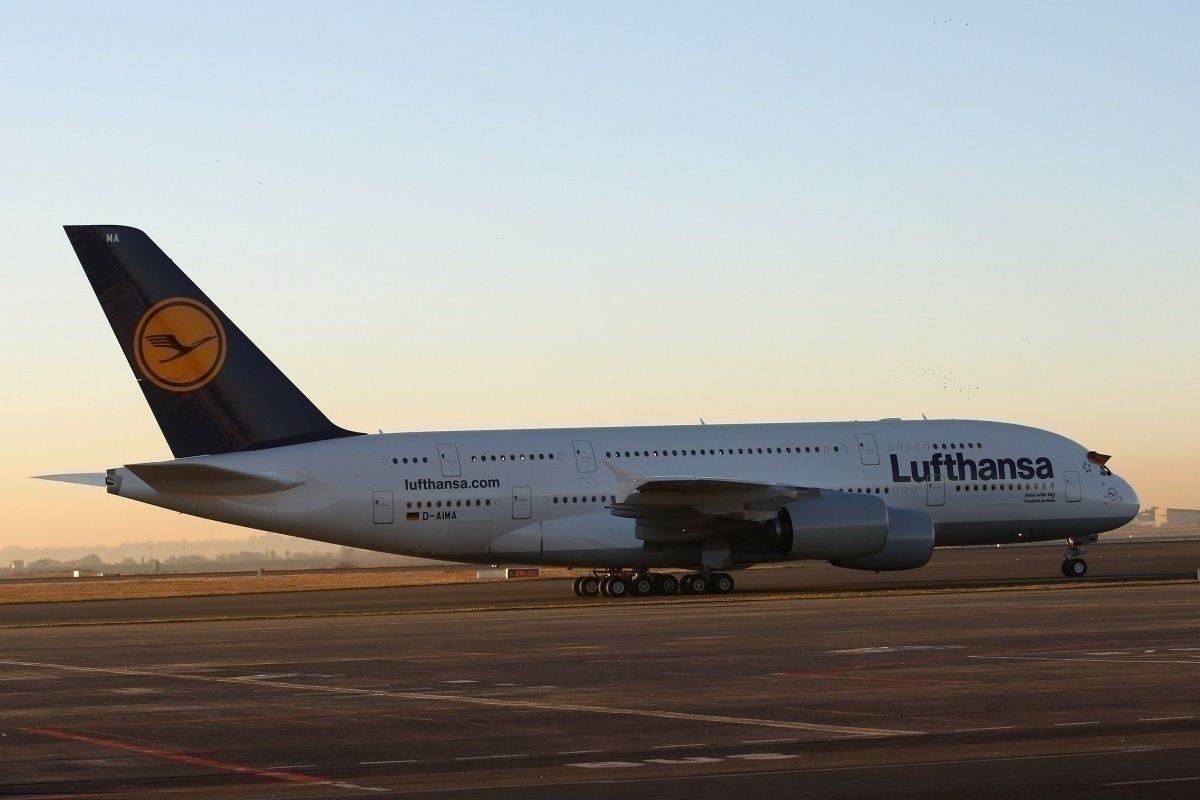Today marks eight years since THAI Airways took delivery of its first Airbus A380. In the current uncertain aviation climate, some airlines have withdrawn larger aircraft from service at short notice, either on a temporary or a permanent basis. So what is the current state of affairs for THAI's superjumbo fleet?
A grand launch
On September 27th, 2012, THAI Airways, following a celebratory delivery ceremony in Toulouse, France, obtained the first of its six Airbus A380-800 aircraft. This saw the airline become "the ninth airline to operate the world's largest and most eco-efficient airliner" at the time, according to the Airbus press release covering the illustrious launch event.
The superjumbo was launched on THAI's routes from Bangkok to Hong Kong and Singapore in October 2012. The next destination served was Frankfurt, by the end of that year. Tokyo and Paris were subsequently added in early 2013 as the airline's A380 fleet grew further. The aircraft's range of 15,700km (8,500 nautical miles) allowed it to operate non-stop flights with a full payload to any European destination. Anywhere in the USA could be reached with a one-stop service.
In addition to its long-range capabilities, Airbus also showcased the latest seat technology (at the time) aboard THAI's new aircraft. The airline's superjumbos seat 507 passengers across a "premium three-class layout," including an all-economy lower deck, according to SeatGuru. Each cabin was newly designed, with respective capacities of 12 private suites in First, 60 flatbed seats in Royal Silk (business), and 435 seats in economy.
Airbus further stated that each of the aircraft's 507 seats was equipped with the "latest on-demand in-flight entertainment systems, communication outlets, and individual power supply". The latter of these, though more commonplace nowadays, will have been a more groundbreaking innovation at the time, particularly in economy class.
Where are they now?
Fast forward eight years, and the effects of the coronavirus pandemic has seen THAI's A380 fleet take on a much bleaker existence. The last commercial flights of each aircraft, per FlightRadar24.com, underline this stark reality, and are as follows:
- HS-TUA - TG911 London Heathrow-Bangkok, March 25th, 2020
- HS-TUB - TG911 London Heathrow-Bangkok, March 31st, 2020
- HS-TUC - TG921 Frankfurt International-Bangkok, April 1st, 2020
- HS-TUD - TG921 Frankfurt International-Bangkok, March 30th, 2020
- HS-TUE - TG921 Frankfurt International-Bangkok, March 31st, 2020
- HS-TUF - TG931 Paris Charles de Gaulle-Bangkok, March 31st, 2020
As Simple Flying reported in July, two of these aircraft have since moved to Rayong, Thailand, for storage. Specifically, these are HS-TUE and HS-TUF. However, this still leaves two-thirds of the fleet having not left the ground in Bangkok for six months. This calls into question whether they will be part of THAI's long-term plans or not.
THAI is not the only airline to have recently taken the A380 out of service. Air France operated its last flight with the superjumbo on June 26th, and Qantas does not expect to fly the A380 internationally again until 2023. Within the last week, Lufthansa also announced it is highly likely that its A380s will never fly again.
While the present situation is challenging for the entire aviation industry, the Airbus A380 appears to be one aircraft type that will come out of it particularly badly.
What are your thoughts about THAI's Airbus A380s? Let us know what you think in the comment section.



